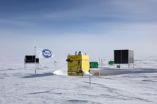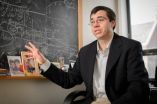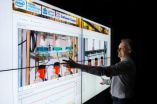(Press-News.org) During very strong El Niño events, sea level drops abruptly in the tropical western Pacific and tides remain below normal for up to a year in the South Pacific, especially around Samoa. The Samoans call the wet stench of coral die-offs arising from the low sea levels "taimasa" (pronounced [kai' ma'sa]). Studying the climate effects of this particular variation of El Niño and how it may change in the future is a team of scientists at the International Pacific Research Center, University of Hawai'i at Mānoa and at the University of New South Wales, Australia.
Two El Niño Taimasa events have occurred in recent history: 1982/83 and 1997/98. El Niño Taimasa differs from other strong El Niño events, such as those in 1986/87 and 2009/10, according to Matthew Widlansky, postdoctoral fellow at the International Pacific Research Center, who spearheaded the study.
"We noticed from tide gauge measurements that toward the end of these very strong El Niño events, when sea levels around Guam quickly returned to normal, that tide gauges near Samoa actually continued to drop," recalls Widlansky.
During such strong El Niño, moreover, the summer rain band over Samoa, called the South Pacific Convergence Zone, collapses toward the equator. These shifts in rainfall cause droughts south of Samoa and sometimes trigger more tropical cyclones to the east near Tahiti.
Using statistical procedures to tease apart the causes of the sea-level seesaw between the North and South Pacific, the scientists found that it is associated with the well-known southward shift of weak trade winds during the termination of El Niño, which in turn is associated with the development of the summer rain band.
Looking into the future with the help of computer climate models, the scientists are now studying how El Niño Taimasa will change with further warming of the planet. Their analyses show, moreover, that sea-level drops could be predictable seasons ahead, which may help island communities prepare for the next El Niño Taimasa.
INFORMATION:
At Ocean Sciences 2014
PROJECTIONS OF EXTREME SEA LEVEL VARIABILITY DUE TO EL NIÑO TAIMASA, Oral presentation Session #:079 Rising Sea Level: Contributions and Future Projections; Date: 2/26/2014; Time: 12:00; Location: 313 B; http://www.sgmeet.com/osm2014/viewabstract.asp?AbstractID=15569
Authors
Widlansky, M. J., University of Hawai'i at Manoa, USA, mwidlans@hawaii.edu
Timmermann, A., University of Hawai'i at Manoa, USA, axel@hawaii.edu
McGregor, S., University of New South Wales, Australia, shayne.mcgregor@unsw.edu.au
Stuecker, M. F., University of Hawai'i at Manoa, USA, stuecker@hawaii.edu
Chikamoto, Y., University of Hawai'i at Manoa, USA, chika44@hawaii.edu
Public Information Officer
Gisela Speidel, Outreach Specialist, International Pacific Research Center; gspeidel@hawaii.edu; tel. – (808) 956-9252
Publication Citation:
Widlansky, M.J., A. Timmermann, S. McGregor, M.F. Stuecker, and W. Cai, 2014: An interhemispheric tropical sea level seesaw due to El Niño Taimasa. J. Climate, 27 (3), 1070-1081, doi:10.1175/JCLI-D-13-00276.1. END
What is El Nino Taimasa?
2014-02-20
ELSE PRESS RELEASES FROM THIS DATE:
Remote Antarctic telescope reveals gas cloud where stars are born
2014-02-20
Using a telescope installed at the driest place on earth - Ridge A in Antarctica – a UNSW-led team of researchers has identified a giant gas cloud which appears to be in an early stage of formation.
Giant clouds of molecular gas – the most massive objects in our galaxy – are the birthplaces of stars.
"This newly discovered gas cloud is shaped like a very long filament, about 200 light years in extent and ten light years across, with a mass about 50,000 times that of our sun," says team leader, Professor Michael Burton, an astronomer at UNSW Australia.
"The evidence suggests ...
With friends like these, who needs democracy?
2014-02-20
EAST LANSING, Mich. — From Ethiopia to Nicaragua, countries that go through civil war are much less likely to become democratic if the winning side gets help from rival nations, a Michigan State University political scientist argues.
In a new study examining democratization after civil wars since World War II, Michael Colaresi found the majority of groups that eventually took power failed to establish democratic governments if those groups took money or weapons from a foreign enemy during the war.
Receiving such aid can create mistrust among the nation's citizens and ...
Sustainable use of energy wood resources shows potential in North-West Russia
2014-02-20
Nowadays, humanity faces many challenges; the most serious are poverty, the growing demand for resources and the deterioration of the environment. In order to satisfy the growing demand for wood, forestry in many countries has to be intensified. The forests of the Russian Federation are the world's largest reserve of wood for different purposes. Intensification of forestry in Russia will result in increasing availability of wood for material and energy uses.
A doctoral dissertation completed at the University of Eastern Finland analysed the potential of energy wood resources ...
From a distance: New technique for repair work
2014-02-20
This news release is available in German.
Numerous German companies are operating globally these days: They develop products domestically, but production is done in other countries like China, Brazil or the Czech Republic. If maintenance or repair work is needed, the engineers who had designed the complex production plants frequently have to travel from Germany.
A novel approach by computer scientists in the research group of professor Thorsten Herfet from the Chair of Telecommunications at Saarland University could provide a solution: a platform that brings together ...
Researching Facebook business
2014-02-20
Establishing and maintaining relationships online is becoming ever more important in the expanding global knowledge economy. But what happens to the relationship between business and consumer when a user "unfriends"? Writing in the International Journal of the Business Environment, Christopher Sibona and Steven Walczak of The Business School, at the University of Colorado Denver, USA, have found that there are many online and offline reasons why a person might "unfriend" another party.
The team has examined these factors and offer insights into how virtual business relationships ...
Gathering the clues to rare gene variants contributing to schizophrenia
2014-02-20
Philadelphia, PA, February 20, 2014 – Schizophrenia has long been known to be highly heritable and is present in approximately 1% of the population. Researchers have been following two paths in their pursuit of identifying schizophrenia risk genes.
Initially, they studied common gene variants that, individually, only increase the risk for schizophrenia by a few percent, perhaps increasing the likelihood of developing schizophrenia from a 10 out of a 1000 chance to an 11 or 12 out of a 1000 chance.
More recently, research has identified gene variants that are rare in ...
Spotlighting black chemists and chemical engineers (video)
2014-02-20
WASHINGTON, Feb. 20, 2014 — Their research may lead to a new generation of renewable fuels, medical devices and safer home products. The American Chemical Society (ACS) is continuing its celebration of Black History Month with a new video featuring several African-American chemists and chemical engineers doing cutting edge research today. The video is available at http://youtu.be/v0PmKbJNAQI.
The video, produced with the National Organization for the Professional Advancement of Black Chemists and Chemical Engineers (NOBCChE), highlights the efforts of Kristala Prather, ...
High cost of fruits, vegetables linked to higher body fat in young children
2014-02-20
Washington, D.C.--High prices for fresh fruits and vegetables are associated with higher Body Mass Index (BMI) in young children in low- and middle-income households, according to American University researchers in the journal Pediatrics.
"There is a small, but significant, association between the prices of fruit and vegetables and higher child BMI," said Taryn Morrissey, the study's lead author and assistant professor of public administration and policy at AU's School of Public Affairs (SPA).
Morrissey said that when the prices of fruits and vegetables go up, families ...
Cell behavior in low oxygen conditions mapped
2014-02-20
LIVERPOOL, UK – 17 February 2014: Research at the University of Liverpool has explained how cells behave when placed in a low oxygen environment, a development that could have implications for cancer patients and other serious illnesses.
The research opens up the possibility of controlling the signals that keep cells alive, preventing the damages caused by ischemia – a restriction of blood supply to tissues. It could also work to help destroy cancer cells.
When the body is deprived of adequate oxygen supply it is known as hypoxia and can cause the death of cells. This ...
Astronomers find solar storms behave like supernovae
2014-02-20
Researchers at UCL have studied the behaviour of the Sun's coronal mass ejections, explaining for the first time the details of how these huge eruptions behave as they fall back onto the Sun's surface. In the process, they have discovered that coronal mass ejections have a surprising twin in the depths of space: the tendrils of gas in the Crab Nebula, which lie 6500 light-years away and are millions of times larger.
On 7 June 2011, the biggest ejection of material ever observed erupted from the surface of the Sun. Over the days that followed, the plasma belched out ...





